Race
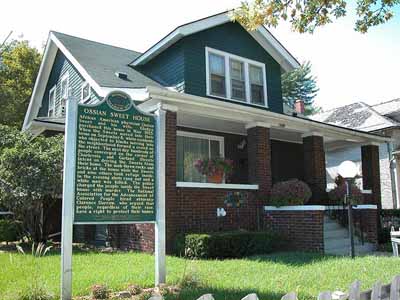
(Dr. Ossian Sweet’s house at 2905 Garland Street in East Detroit.)
“There is a saying among Southern blacks that goes like this: White folks up North don’t care how high you get as long as you don’t get too close; white folks down South don’t care how close you get as long as you don’t get too high.”
– MARYANNE VOLLERS in her review of Edward Ball’s best selling examination of his plantation family’s history “Slaves in the Family.”
Well, I guess I can’t avoid it any longer, but I need to mention the central issue in why a great but flawed city died. It is about race, racism, and the spin downward from some really bad shit. You could start it with the insurrection of Pontiac, the last of the great chiefs who confronted white expansion in the Northwest Territories, but that is a rabbit hole of wonders we will have to put aside for now.
My discomfort this morning is amplified by an early meeting in the place I like second-least to drive to: traffic-clogged Fairfax, Virginia.
See, I was going to tell you about the Detroit I moved back to in the summer of 1973.
It was a markedly different city from what it had been, transformed by the riots of a half-decade before. The last ditch of the old order was the 1973 Mayoral campaign of the last Great White Hope, Police Commissioner John Nichols versus a social activist and former Tuskegee Airman named Coleman Young.
Man, there was a lot going on that year. The US was pulling out of Vietnam; the OPEC thugs were about to pull the plug on the American economy. I was graduating from college and leaving the good auspices of The International Bank of Dad.
I need to do a brief tribute to Coleman Young, the African-American who beat Commissioner Nichols, but that takes a morning all to itself. I heard an interesting dual dialogue on the radio in DC late yesterday between ex-Mayor for life Marion Barry and Young successor Dennis Archer that gave me some context.
The two men presided on some amazing demonstrations of democracy in action, though as far as I know, only former Mayor Barry actually did any jail time for them. They both have some interesting ideas about what is going on today, but that is not the point of this outing, and it is important to know that Mayor Barry is still a serving Council member for Ward 8 of the District.
It was sort of weird, like listening to an inverted version of the news on All-India Radio, but that is the nature of what of what passes for talk on the subject of race in these Untied States.
The rhetoric was largely invective, which is to say that the two men I heard on the radio were campaigning against the very power structure they both have been members of all their lives. I do not have the voice to figure it out properly, but I know someone who does.
Big John Minter could explain it, if he is still alive.
Big John was the African American who taught me the parking lot game when I was a kid, a man of vast proportions and intellect. He taught me how to slim-jim a car door, scope the lot for opportunities, scan the NY Times list of current literature and detect management bullshit.
He was an artist, able to shake down the The Man with his righteous rage at Demery’s Department Store in downtown Grabbingham, too.
He persuaded- intimidated- the store into providing him a ticket to represent the store at Dr. King’s memorial in Washington the year after the ’67 riots.
At the height of the riots that summer, John told me about sitting sat on his porch downtown with a shotgun on his knee, watching the insurrection unfold. He still made it to work out in the suburbs during the day where the National Guard had established check-points.
Imagine that- Armored personnel carriers and nervous reservists in Grabbingham! “They” were coming!
It was not that things hadn’t been going south for the Motor City for years. The zenith of the population inside the city limits, which effectively meant east of 8 Mile to the Detroit river, rose to a rainbow of nearly two million citizens in the war years.
The pressure on available housing was intense, and the Great Migration of African Americans north strained racial relations. There were antecedents to all that. Canada, and liberty, were right across the river from Detroit, so the Underground Railway had a terminus in the pre-motor City. While the volunteer Wolverines of the Iron Brigade served with distinction in the Union Army, there were also riots in the city about race resentment.
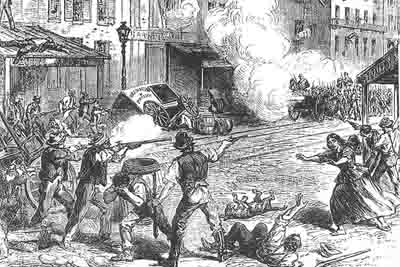
(The first and not the last riot about race in Detroit. March 6, 1863.)
At the time, the great riot of March 6, 1863, was reported as “the bloodiest day that ever dawned upon Detroit.”
While not as famous or destructive as the later riots, the one in the middle of the Civil War was certainly something that registered in Mr. Lincoln’s White House. The casualties of the day included at least two innocent people killed, a multitude of others, mostly African-American, mercilessly beaten. In an eerie tribute to the future, over thirty buildings were burned to the ground, and a number of other buildings were damaged by arson.
It does not sound like much in the context of what would come, but it was something else.
The riot was so alarming that it resulted in the creation of a full-time police force- the one headed up by John Nichols the year I moved back to the city.
The lingering tensions were evident in the 1920s trial of Dr. Ossian Sweet, a physician who happened to be black. He was acquitted of murder after a white man died when the Doctor fired into a threatening mob who gathered to try to force him out of a predominantly white neighborhood.
It got worse than that, and then the whites just gave up and left. But not all of them did. I will have to talk to you about that, and Coleman Young, and why some of my southern friends think everyone up north is crazy tomorrow.
I have to be in Fairfax. Crap.
Copyright 2011 Vic Socotra
www.vicsocotra.com
Migrations II

Chad, left, and Jeremy at their farewell to Arlington at Kate’s back bar at Union Jack. Photo Socotra.
Chad and Jeremy are out of here this morning. The U-Haul truck is parked in the back, over the strong objection of management.
Jeremy laughed about it at Union Jack last night at the farewell at Kate’s back bar. “So, I like went in to the office to tell them that I was parking the truck in the back, and they said I couldn’t.” He shrugged his narrow shoulders in his usual dismissive way. “So, I said, like what are you going to do? Make us leave?”
He had spent the last day moving crap himself. Chad was wrapping up his affairs in his office at the Dollar Store HQ where he serves as a security advisor, preventing newly frugal Americans from ripping off low-cost items.
They are headed for the beach in Delaware. When he arrived, fashionably late, he said this migration was going to work out really well, and he wanted the Big Pink crowd to feel comfortable coming up and sleeping on the couch.
“A block from the beach,” he said with authority. “And a block from the bar. It is going to be perfect.”
I had to agree with the migration, though I will be sad to lose the energy of youth at our quirky old building. So did Marty 1, and Mandy, and Slick and Kathy and Chas and Mary Margaret and Joe who made up the core group of Big Pinkers that lined the bar to see them off.
In my decade in the building, I have to say that Chad and Jeremy were one of the “It Couples” that have graced its stately halls. They own 2008-9, the year that everything, the pool, the economy, real estate values and life in general came off the rails.
That summer seemed to mark a tipping point of sorts. Remember? I vividly recall doing the numbers that summer and realizing we were no-shit going to elect an African-American man to the presidency; gay couples were nothing to comment about, everything was in a sort of free fall that was scary and filled with an odd combination of dread and hope.
Chad and Jeremy pushed all the limits while they were here, though they have been a little more constrained since that first summer. Then, they hung at the pool, blatantly ignoring several of the ore prominent Regulations with impunity, which ultimately resulted in the legendary Revolt of the Grandmas and an emergency meeting of the Condo Board.
I made my exit after a decent interval, early by their standards, but I live on a different rhythm than they do, and the evening is for the young. I strode along the concrete toward the garage under the Westin Hotel where the Hubrismobile was waiting, thinking about moving and migrations.
A decade, I thought, waiting for the long light to change at the intersection of Wilson and Glebe road. A full ten years at Big Pink. Maybe it is getting on toward time to leave, I thought. If the currency collapses, as I think it might, the fixed year mortgage is going to be a good deal, an anchor to the past when a dollar meant something. On the other hand, the Condo fees are going to soar with inflation, effectively wiping out the fixed income residents just to keep the building heated and the lights on.
Maybe time to get out from under the obligation and rent someplace, like Chad and Jeremy are going to do in Delaware.
That would mean coming unstuck in place, moving again, and looking at the real estate prices in Detroit I was tantalized by the possibilities. A house for pocket change, I marveled, looking at the prices of the first houses my folks lived in when they migrated from New York City to the booming industrial Mecca of Detroit.
Of course, buying property in the sprawling wasteland of what used to be the Motor City would leave you in Detroit, a 113-square mile former urban desert dotted only with islands of civilization.
What a change, I thought. Almost unimaginable, though they are asking us to imagine a lot of things these days. I got a link to an amazing set of footage taken of the first American jet aircraft. Here it is, if you have not seen something like this, a moment captured in sepia from 1942. The wonder of the Bell P-59 Airacomet is palpable, just like the skinny pilots of another, earlier America.
http://www.aircraftowner.com/videos/view/americas-first-jet-flight-october-1942_1617.html
I marveled at the whole thing. Seventy years from the first jet to landing on the moon and then tossing the Space Shuttle on the ash-heap of history. Easy come, easy go, just like Detroit.
It was so different in the world that Word War II created, and which we finally have just about used up.
I still have a Hitler Youth flag that was liberated by one of the young men from Ohio in the ETO. It has the original tags on it. Nino- I think that was the name- gave it to Magpie, who was living at Spellman Hall on Hudson Street in Greenwich Village while she worked in the exotic art deco Chrysler Building for the Texas Company as an executive assistant.
Nino was headed back to the Valley, flush with enthusiasm and hoping for something more from Mom than he did not get. I think he regretted giving it up in exchange for a peck on the cheek. Most of the young men were headed back to the Valley.
Not her.
On a blind date arranged by a guy named Ray Rappaport in 1946 she met a striking young Naval Aviator who had the smoldering dark looks of movie star Gregory Peck. He was named Bill, and things clicked, despite an early misapprehension about the large gold Masonic ring he sported which made her think he was a married guy on the make. They got that sorted out, and smoked Chesterfields and wore beer jackets and enjoyed the bright lights of Manhattan.

One of the brownstone buildings on St. James St. in Brooklyn. Undivided, the houses go for a million today.
In 1947, they married and moved into a little place at 123 St. James Place in Brooklyn where Bill was studying at Pratt Institute’s Clinton Hill campus. It was a quirky old apartment building. The electricity would go out when all the young couples would try to cook all at once in the evening, but that was just the way things were after the war.
They moved to 294 Cumberland Street where the power was a little more reliable, also in Brooklyn, until 1949. Dad almost completed his degree, but the lure of opportunity and big money was too much for a couple making not much more than a secretary’s pay and the modest but welcome benefits of the GI bill.
The opportunity was represented by the magnet of Detroit, the Arsenal of Democracy. The rise of the city sucked African Americans from across the south and closed the books on the Great Depression. In addition to the agricultural workers and women who sustained the war industry while the Boys were overseas, conversion of the munitions and aircraft plants back to civilian consumer goods attracted young vets.

Grandma’s house on North Ave in Massillon, Ohio. Painting by Aunt Laura Rose.
Massillon, Ohio, was the little town where Grandma lived after grandpa Mike died. She married Evan, and moved into his house there on North Ave, escaping sad little Bellaire on the river. The little house with the chocolate-colored tile driveway still slumbers there near the Women’s Club, on I-77 south of Akron.
The Ohio and Pennsylvania Turnpikes were the route of migration that Magpie and Raven followed to their dreams in Detroit, through the hills of the Keystone State and onto the long straight-away across the flatlands.
The auto companies in Detroit were hiring, and Raven got a line on a job with Ford’s, which is what we still called FoMoCo as if Henry were still at the tiller. The job was one of the sexy ones, in the styling shop. Dad had not completely finished his course work at Pratt Institute on the GI Bill, but it was time to move on. The Ohio Turnpike was under construction that year, following the route of the old railroad, and I remember for years afterward riding in the back of the Ramblers as the four-lane snake finally reached all the way to hook up with the Pennsylvania Turnpike.
They took the Big Chance, when the Ford Motor Company really got rolling with the first sleek post-war designs of 1948 and started to hire bright young men to design the future. The women who had built the bombers at Willow Run and stacked ammunition were encouraged to go home, and make way for the Boys who served.
They pulled up stakes and headed for the Midwest in the pre-war Ford Model A.
They could not afford to move into the city at first, and secured lodgings in suburban Ferndale, just a mile or so from the city limits.
They found the place at 1514 Pinecrest before moving into town to be closer to Dad’s job at Ford’s. They were at 14987 Sussex St when I was born in 1951, and later, the first place I remember at 14230 Kentucky Street.
They were not far from the Wall at Eight Mile. In 1940, this section of Detroit was ripe for development. Water and sewer lines had just been extended, but there was a problem. Some Negro citizens of Detroit had moved into the area when it was fallow and had built modest homes.
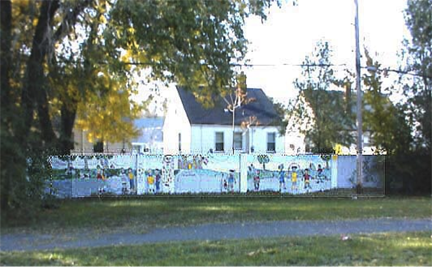
A stretch of The Wall near Eight Mile in Joe Louis Park.
With the coming of World War II, a developer sought to construct houses for middle-class whites, just across the city limit at Eight Mile. He began his development but was dismayed to discover that his prime location had a problem: the FHA would not back loans there since the Home Owner’s Loan Corporation (predecessor of Fanny Mae) had coded the area in red.
To overcome this challenge, he built a concrete wall, 6 feet in height and one-half mile long from the western boundary of what is now the Alfonso Wells Memorial Playground north from Eight Mile Road to the intersection at Wyoming Boulevard.
I doubt that Mom and Dad knew anything about the Wall, since they were renters and took what was on the market. The Wall served its purpose. Loans were made, and the houses went up.
Then there was a choice about where to live, at least for white folks, but none wanted to live in a red-lined neighborhood.
The developers had an angle- as we have come to find out, they always do. The Realtors would buy a home in a green area, and move in an African American family. It drove the white families out in a panic, seeing the prospects of their green homes turning crimson on a banker’s map, and the real estate peopled pocketed the cash they made in changing the composition of the city.
When the John C. Lodge Expressway was slashed along the course of Woodward Avenue, it became easy to get way from the city. Later, when the north-south artery of I-75 was bulldozed through the old Paradise Valley/Black Bottom neighborhood, the main African-American neighborhood was paved over. With the demand for housing being what it was, the African American families were willing to pay a premium to get it.
With the coming of the new mega-roads, the auto companies began to disperse their manufacturing operations away from the city proper, and the seniority system ensured that the last-hired were first-fired. The industry that had acted as a magnet to employ African-Americans from the South began to shed young men. It was the beginning of a permanent underclass in the city, a large pool of unemployed and unemployable men and women.
Then came the riots of 1967 and 1968 and overnight, the city became overwhelmingly poor and black.
That was the Detroit I came back to in the summer of 1973. It was quite an education. But we will have to get to that tomorrow.
Copyright 2008 Vic Socotra
www.vicsocotra.com
Houses
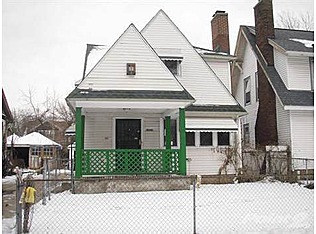
Typical house on Sussex. Cost in 2011 around $4,900, some restrictions apply. Not many.
The Conference is causing me to go through a lot of checked luggage. We are all going to be in Detroit shortly, and the Tigers are going to be hosting the Yankees, and I have tickets to one of the games.
It will be the first time I see the inside of the new stadium, the one that replaced the iconic Tiger Stadium (once Brigg’s) that was further downriver in the shadow of the Ambassador Bridge to Canada.
Sorry to be unpacking all this crap for you. I am still puzzling over the remarks of the President, and his case for what we are doing in Libya, where some of the rebels may, or may not, be al Qaida veterans. I am going to bite my tongue for now, but I have to say that I have my concerns.
So bear with me if I do something else this morning. I was born in Detroit a long time ago, in the summer when the snow was gone and the birds sang and the water of the big river glinted blue.
I lived in three places in the city. The first two I had no choice about, though they were nice enough. They still exist. The first was at 14897 Sussex St, as an infant, and later the folks moved out toward McNichols and rented a place up the block from the D&W Oil Company at 14230 Kentucky St.

Typical house on Kentucky Street. Cost around $10,000.
According to the real estate estimates on Zillow, you could buy either one on your credit card.
The third place was twenty years later. The parents of my one of my pals had done a reverse migration back to the city, one of the few. They sold their sprawling ranch house near Troy and bought a mansion on Afton Street in the posh Palmer Woods neighborhood, one of the last flowers of the gentility developed inside the city limits in the twenties and thirties.
The Dodge Brothers had a compound there, really spectacular, and the place they bought for a song had a greenhouse and slate roof and walnut paneling and butler’s pantry, among other things. Above the three car garage was the maid’s quarters that they kindly offered me for $75 a month.
The publishing company that gave me my first job insisted that I actually live in the city, thinking (correctly) that if I stayed in Ann Arbor I would be tempted to screw off rather than peddle text books to Wayne State University, Marygrove, the Detroit College of Law, Lawrence Tech and U of D.
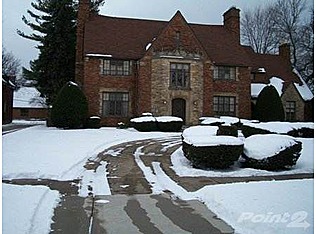
A typical house on Afton Street, in still elegant Palmer Woods. You can get this baby with guest quarters for a lot less than my little two bedroom condo.
It was six years after the insurrection, and it was the time I got to know the city pretty well, and what was going on in the aftermath of what happened in 1967.
My folks got the hell out of Detroit when they could. My brother Spike arrived while we were still on Kentucky Street, and Magpie was pregnant with Anook when we decamped for the northern suburbs. That is where we were when the city died, though it was not apparent at the time that it really was pretty much over for the Motor City. There was a lot of stuff down there, some really good stuff, and it would take a few more decades for it to get to where it is now.
Let’s not dance around it.
It is summer, 1967. Two-a-day conditioning practice has begun for the Maples football team. I am in town, at the house on Hawthorn Street next to the park in Grabbingam. It is a nice house. Raven is moving up in the auto business, and the folks have moved from the little place on Chester Street and into the more stately neighborhood off Maple Road where the Rouge River flows over the dam at the end of Quarton Lake and meanders through the cool green glens of he park.
I am sixteen years old and pretty full of myself. Raven and Magpie are Up North at the cabin with my brother and sister. Home alone, I am trying to clean up the wreckage of an ill-advised party when the radio begins to broadcast calls for National Guardsmen to report to the Armory.
Here is what unraveled through the course of the day, and created something that caused my little indiscretion to pale in significance and Raven directed me to follow him in the Rambler Ambassador station wagon and top off the gas tanks at the Marathon Station to ensure we could get away from the city just in case.
Apparently the cops had done their thing at a Blind Pig down on Twelfth Street, near the intersection at Clairmount Avenue. They were expecting to round up a few patrons with a couple four-man Tac Force squads, but instead ran into a buzz saw. There were more than eighty people inside, holding a party for two returning Vietnam veterans. The cops tried to arrest everyone, and called for back up to transport the arrestees. A crowd gathered to protest- it was hot that night and there were a lot of people still in the streets trying to stay cool.
After the last police car left, quiet should have returned, but it was a warm night and it did not. One thing led to another. A small group of men who had nothing better to do and no place to go lifted up the security bars of a clothing store nearby and broke the windows.
From this point of origin, looting and arson spread through the Northwest side of Detroit, then crossed over to the East Side. Within 48 hours Governor George Romney had called out the National Guard. Romney had been Dad’s boss at American Motors, and was a family icon.
Odd to think about, but I would have been in a lot of trouble about the party- as an example, some joker had taken a bite out of each apple in the big bowl in the kitchen and then carefully placed them back with all the bite marks concealed.
The party debris did not get me in a lot of trouble, since there were other fish in the fire.
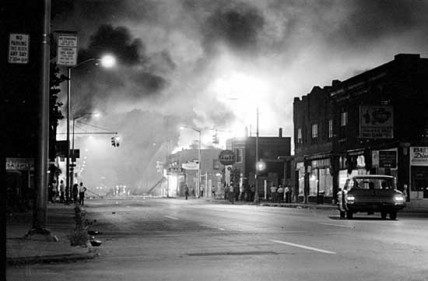
The Riot of 1967, not to be confused with the ones in 1863, 1941 and 1943. Photo Detroit Free Press.
President Johnson supported a return to order, and dispatched the 82nd Airborne on the riot’s fourth day. At the conclusion of five days of rioting, 43 people were dead, most (though not all) African-American, and 1189 were injured and over 7000 people had been arrested.
Thus began the long slide that killed off the center city, though if you were to engrave a date of death on the tombstone, it would the one that the Blind Pig on 12th Street was shut down: 23 July 1967.
It all kinda jumbles together with the riots of the next year, when Doctor King was gunned down, and all the other central cities in America were torched.
As a Detroiter, I am proud to say that we got to do it twice, and really have not stopped since.
Copyright 2011 Vic Socotra
www.vicocotra.com
Migration
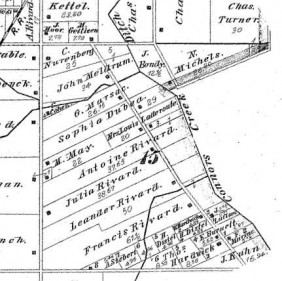
Angled lots along the Detroit river in the old French city. Map courtesy Michigan Historical Society.
I swear, if I have to drive Up North in one shot again I will slit my wrists. I am getting too old for that, but don’t have enough time to make it a relaxed two-day trip with a stay in a dump motel in Elyria, Ohio in the middle.
That is one reason why I was so excited to hear that they had re-scheduled the big annual IT conference in Detroit. That way I will be able to fly two thirds of the way from Washington, and then only have to drive five hundred miles instead of the usual 1700 to look in on the folks Up North and see how they are getting along.
A lot of the prospective attendees at the Conference are not as excited as I am. They have taken the news of the 25% decline in the population of the city over the last decade as some sort of barometer of decay. Maybe it is the reports of vast swaths of prairie that are springing up where there used to be neighborhoods, or the crime, or the generally dismal economic situation in the state.
I think Detroit is a great town, and while it has some challenges, it has always been a key venue for the great migrations on the North American continent.
In fact, the Motor City goes back to ground zero for the European expansion west. Back in the 1600’s, France began establishing forts at strategic locations along the waterways that connect the largest accumulation of fresh water on the planet. The goal was to keep the Brits contained in New England, and establish a trade monopoly with the local indigenous peoples.
One of the boldest of the French, a man named Antoine de la Mothe Cadillac, felt that the narrows known as “le detroit,” or the straits between Lake Erie and Saint Claire, was an obvious location for a major fortification. The King agreed, and a stockade on the Detroit River was erected in 1701.
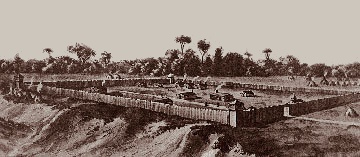
Steel engraving conceiving Fort Ponchartrain. Courtesy Gross Point Historical Society.
Cadillac’s Fort Ponchartrain was not the first settlement in the area, since in addition to the black-robed Jesuits had passed through attempting to save souls, and the woods-runners- the coureurs de bois- had interacted and sometimes intermarried with the resident Great Lakes Ottawa as early as 1615, when the English were just clinging to life at Jamestown in sultry Virginia.
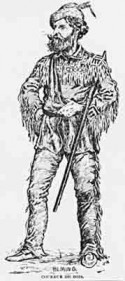
French "runner of the woods"
Members of the Algonquin language family, the Ottawa, along with the Chippewa and Potowatomi were known to other Algonquins as intertribal traders who marketed corn meal, furs, skins, tobacco and foodstuffs to the other bands. The name Ottawa in the Algonquin language means “to trade.”
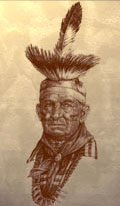
Ottowa Man. Etching from The History of Native American Tribes.
And that is what Detroit was always about, from the earliest days. You can still sense the old French presence in town from the orientation of the streets along the river, and their names. They did not hew to the great English grid system of organization; rather, the lots were narrow and followed the course of the river. The street names evoke the ethnicity of the early migrants: Chene, Beaufait, Livernois, Beaubien, Cadieux, St. Aubin, Lambert and of course, fabulous Livernois.
I will touch on the waves of migrants who came after as we get to it, since the history of who came to Detroit is also the story of who left it, but I got more bad news yesterday about my birth city, which may affect the convention.
I have a pal there who keeps me up to date on what is going on. Of course, he doesn’t live in the city- he is in Ann Arbor, well enough away to the west to be out of the immediate frag pattern. He wrote me yesterday to say this:
“Newly-elected Governor Snyder has severely reduced the number of State Police posts in Detroit. Please tell your colleagues who plan on attending the conference that they could be “on their own” in small-government Tea-Party-America.
They will need to carry handguns with them at all times. They will have to provide for their own protection. And tell them to shoot to kill, we may not have enough money to “house prisoners” anymore. Oh, wait prisons will be outsourced to some jerk who got a tax cut.”
I assume he was at least speaking in jest. In my experience, blighted areas are the places where gun laws are the strictest, just like they are in Washington, DC. Still, I recall what Roger the Dodger used to say at the house on John Street back in college. His Dad was a Detroit cop, back when it was largely an all-white force, though the city itself was already in transition to something else.
“You can’t shoot people outdoors,” he said. “So make sure you drag them inside before the police come. Or at least get a belt or a shoe.”
More on the great migrations tomorrow.
Copyright 2011 Vic Socotra
www.vicsocotra.com
Doing the Numbers
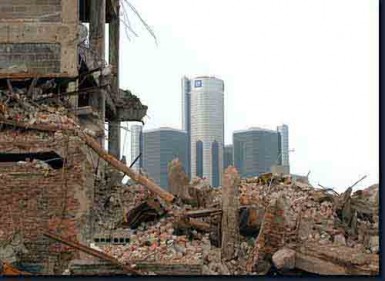
(2005: The Renaissance Center, home of the 2011 IT conference, rises behind the ruins of the Detroit Screw Works factory. Built in the aftermath of the 1967 riots that finished off the central city, the original design featured a gigantic concrete berm that sealed the complex off from the anarchy of the streets. Photo DetroitYes.)
It is snowing this morning in Washington. Half-hearted, perhaps, and it sticks at the moment only to the roofs and the cars in the lot far below. The numbers on the thermometer hover around 35, colder than Stockholm again, and it sucks.
Tropic dreams still possess me, the warmth of the moist gulf breeze still stirs my heart- and loins, for that matter, since the sensuality of the Keys is as unmistakable as it is irresistible. And now the last claws of winter rake that much more cruelly on the still-peeling skin of my back.
Crap. I wish I had sailed south from Key West and toward Ernie’s old haunts in Old Havana, and by the numbers, his refuge at Finca Vigia ten miles west. The limestone villa and grounds are a museum now for the Cuban people, and a tourist magnet that tugs at me.
Ernie’s fourth wife Mary, the one who awoke that morning in 1961 to the shotgun blast in the modern house in Ketchum, Idaho, wanted to have Pilar towed offshore and sunk in the deep water, but Cuban red tape- just as complex as that of Coleman Young’s junta in Detroit- did not make that possible.
Uncle Fidel decreed that the boat be restored, and it is now on a cradle on the tennis courts at “Lookout Farm.” Some people seem to have an instinct for saving things of worth, which is contrary to some places I can think of. In fact, I have been thinking about that a lot lately.
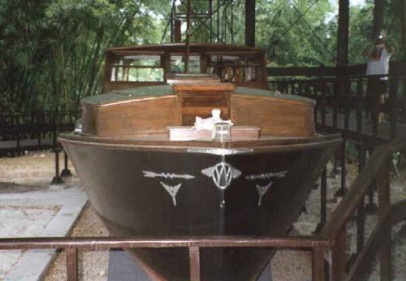
Pilar today, on the tennis courts at Lookout Farm near Havana, Cuba. Photo Cuban Tourist Board.
I can find no evidence that Ernie Hemingway did anything of significance in the Motor City. He must have passed through on the train, though, perhaps on his way to New York or to his short stints of employment in Toronto where he worked as a foreign correspondent for the Star and Star Weekly.
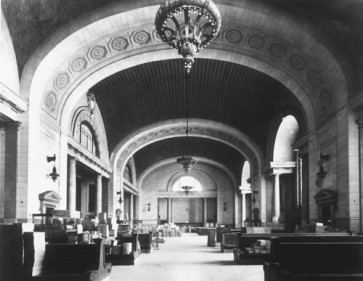
The waiting concourse of Michigan Central in Detroit in Ernie’s time. Photo Michigan Historical Society.
He doubtless would have seen the fabulous interior of Michigan Central, whose ruins are perhaps the most evocative of the destruction of the old city. That has been on my mind a lot, and the crowd at the convention was talking about it incessantly, since we are all headed for the city in only five weeks.
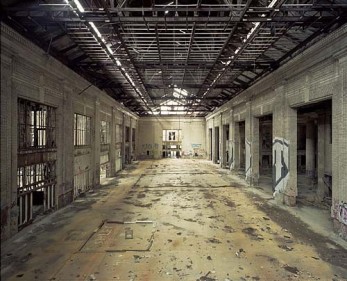
The Grand concourse today. Photo Sean Hemmerle.
This year marks the end of the disbelief, I think, and will be the end of a lot of stuff. For one, the idea that the government has the discretionary funds to sponsor the travel and organizational costs of these conferences will clearly change. I remember when we crowded into smaller venues in the capital region, and industry was happy to attend to get access to the government officials.
We ever had a recession here in DC, since the collapse everywhere else just caused more government activity, and the wars made business good for the local hot-house military contractors.
Now, the big conferences have glamorous destinations for no discernable reason. We have been to Ernie’s Chicago for the big IT convention, and Phoenix last year. This next one in early May was supposed to be in Nashville, at Opryland or someplace, but the company that organizes these affairs for the government screwed up their negotiations and were suddenly without a destination.
Intense negotiations with the National Harbor people collapsed when the national convention of the Outback Steakhouse franchise sealed the deal first.
In desperation, the conference organizers turned to the only major venue that no one else wanted.
Detroit.
As I say, people have been joking about it sever since. “Oh, you going to the big IT conference? In Detroit?” Then the rolling of the eyes, or the protruding of the tongue in simulated disgust.
It is hard for a Detroit boy to take, and the news from he census people was just piling on the continuing train wreck that is- or was- my birth city.
The data that spewed out of the 2010 census made real the perceived collapse of Detroit, just when things might have been showing some signs of improvement- even the beginning of a minor Renaissance.
Since the millennial head count in 2000, Detroit’s population plunged by a full quarter, to 713,777. The news back in 2000, that what was once the fourth largest city in America no longer had a million residents was stark, but this is incredible news.
The Motor City is now smaller than Charlotte, NC, or Jacksonville, FL, or even San Jose, CA.
It is the smallest number of people who inhabit the 113 square miles of incorporated city in a hundred years, and according to the Times this morning, the most precipitous drop in American history for any city with more than 100,000 residents.
The slow-motion hurricane of the last decade has displaced more people than fled New Orleans after Katrina.
I have been advertising a great tour for the people going to the conference in May. I was going to include the refurbished Fox Theater, the lovely structure that featured in the Eminem Chrysler commercial that aired during the Super Bowl.
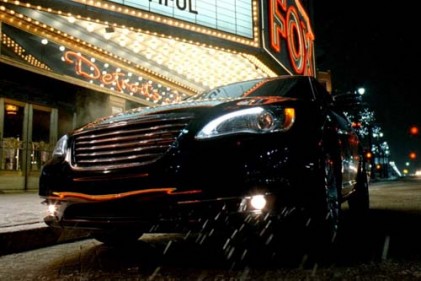
Eminem’s Super Bowl Chrysler in front of the Fox Theater in a gritty winter in Detroit, 2010. Photo Fiat-Chrysler Corp.
I was going to throw in Ford Field, and some of the remaining structures that transformed the world a century ago and were the arsenal of democracy that beat the Axis Powers.
I will try do the impact of the numbers for you, and lay out some of the fun things to do in the Motor City, but this is going to take some work. As we roll toward the town that put America on wheels over the next few weeks, I will try to put together an itinerary and some commentary that gives you an idea of what losing a war is like.
I mean, seriously, Berlin is OK today. And the residents of that fair city had to deal with the freaking Red Army.
Copyright 2010 Vic Socotra
www.vicsocotra.com
Friends in the Business
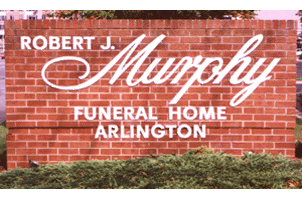
I wish I had some more time this morning. I would tell you how good it was to stumble upon Death Junior and Doctor D at Willow last night. They were taking a welcome break from the business of death over at Murphy’s Funeral Home, and were drinking something pink in large tumblers.
I was surprised to see them. Ted’s Montana Grill is the place you can see right from Murphy’s formal front entrance, and that is normally where the staff casts off the pall of the working day.
Elisabeth was manning the bar, lithe and graceful as always, and Big Jim was supervising the happy hour crowd with quiet authority.
I took an active interest in the discussion, since I am proud member of the prospective Murphy’s family, and was interested in the fact that a prominent retired Naval Officer whose signature adorns one of the certificates in my file is a current transient resident of the freezer case at the Home.
He has just arrived, and will be in residence for a while, waiting on his date with formal interment at Arlington on the 12th of May.
DJ has lost a lot of weight and changed her hair color. She looked great. Doctor D is a tall burly man with a pronounced five o’clock shadow and close-cropped hair. He had removed the tie from his formal white shirt and unbuttoned the neck. He is doing a reverse retirement, is dabbling with employment. He preps the dearly departed when he is working, but prefers to travel while he can enjoy it.
I could have taken umbrage with that, having just traveled myself and enjoyed it vastly, but I could see his point. It would be much easier to retire first, and then ease into the working world, and keep working until you fall over and the Murphy’s people come for The Big Removal.
Doctor D regaled that end of the bar with tales of Removals in the great Snow Storm. See, the dead rest not where they pass, and the living insist on their orderly collection regardless of the elements. It was a hoot hearing what it was like horsing the body bag and the Stokes Litter through the drifts, having people ask what was going on, and the Doctor not responding, giving the deceased a little dignity.
Being of a certain age, I now have friends who have occupied the chiller at Murphy’s, due to the time constraints of the limited staff at Arlington, and the consequent waiting period. It sort of gives me the creeps, thinking about being in the refrigerator that long. I am reconsidering the whole thing.
“So,” I said. “If I decided to get cremated, would I have to go in the Columbarium, or could I get planted in the ground? That is the deal. I certainly don’t want to get stuck in the niches they are putting in the new stone wall across Washington Boulevard from the Pentagon.” It has always struck me that above ground resting places are inherently temporary, and I am interested in permanent solutions, at least until the low green hills wash down into the Potomac.
The Doctor looked at me thoughtfully. “No, you are entitled to an in-ground internment, even if you are just in an urn.”
“I was interested in the full-body burial so I could have my dog’s ashes go with me,” I said.
“Strictly prohibited,” he said, with a wink. “The Army does not permit that.”
“Unless you have friends,” said DJ with a laugh.
“Yeah,” I said. “It is good to have friends. I was thinking that if I got cremated I could specify in my will that my kids would have to take half the ashes to the Philippines and put them in the US cemetery at Clark Air Base, and that would force them to see one of my favorite places in the world.”
“Strictly prohibited,” said the Doctor gravely. “The Army insists on 100% weight for Arlington.”
“Though I suppose we could include the dog,” said DJ thoughtfully.
“It is nice to have friends,” I said, and waved at Elisabeth for another glass of the Happy Hour white. “I never would have known the ropes if I hadn’t asked you guys.”
“Not a problem,” said he Doctor. “That is what being a professional is about.”
We drifted off on other interesting aspects of the business of death, and the comings and goings from Murphy’s. At length, DJ and the Doctor rose and went on to other engagements and I did, too.
It is good to have friends in the business.
Copyright 2011 Vic Socotra
www.vicsocotra.com
Death, and….
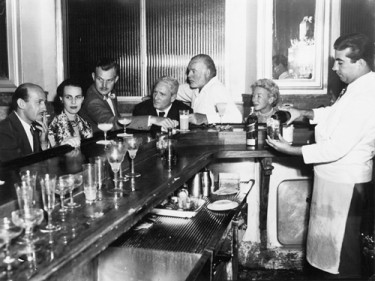
Ernie and Spencer Tracy in Old Havana.
The big line of thunder-bumpers rolled through Arlington after I got home, followed by a cold front and night-time temperatures that hovered above freezing but at something less than cozy. When I checked the temperature this morning, it was just about dead-even with Stockholm.
I sighed, filled with regret that I cannot tell all the stories that emanate from the pastel-toned little village on the coral rock that surrounds Mile Marker 0.
My pal writes a series of eclectic tales from what he calls “My Isle Seat,” and he does the place justice, which I, as an accidental tourist, cannot. My story is mostly punctuated with “Wow, Man,” or “Intense.”
There were so many stories that oozed out of the boozy touring- the midnight relocation of Sloppy Joe’s Bar, for example, or the Hyatt Resort that was built around the bunker-like bar where the Key West city government planned secession from the Union in the wake of the Mariel Boatlift.
There was a round table in the back where treasure hunter Mel Fisher schemed to keep the treasure he finally found from the fabled Spanish galleons Nuestra Senora de Atocha and Santa Margarita that sank during a hurricane on September 6, 1622, near the Keys,
It is tempting to race down both of those narrative rabbit holes since they are dynamite theater. The secession drama that featured a one-minute war by the forces of the Conch Republic, led by the duly elected mayor, followed by unilateral surrender to the US Navy.
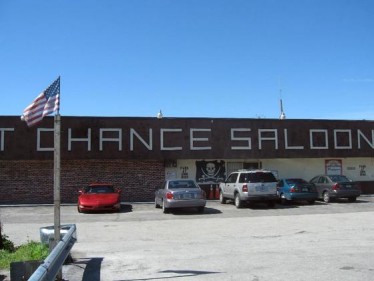
Skeeter’s Last Chance Saloon. Photo Socotra.
The people who performed the act of political theater are still around, even if Mel has passed away, and they tell the story far better than I can. There was real drama surrounding the Border Patrol check point to screen for illegal Cuban immigrants, and the ensuing 17-mile traffic backup on US 1 that stretched back down through the glades toward Key Largo from Skeeter’s Last Chance Bar at Homestead.
The notion that Monroe County was something separate from the rest of the Lower 48 was quite legitimate, even if the theater was surreal.
I have a better claim to being able to say something about Ernie the famous writer. His decade on the Island is a great tale, and I may follow up on that some time. It is intriguing to think that I have resided in Big Pink for ten years, effective this coming October, so I have an idea about the way a decade can frame a life.
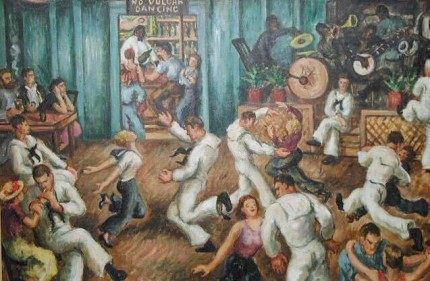
Interior of Sloppy Joe’s, circa Papa’s time. Painting by Waldo Pierce, all rights reserved.
An associate has observed that I labor under the delusion that I have something in common with Ernie, which is true enough, though I demure at the depth of the hallucination. I have been through many of the places Ernie liked, seen the snowy summit of Kilimanjaro and had a drink at the George V Bar in Paris that he “liberated” in the war, but there are many more that I have yet to see.
As part of the recovery process from this trip, I glanced at the tax forms that were strewn across the end of the writing table.
Yours are due in a few weeks, so there is a fair amount of interest in them. I am suffering from the delusion that I can make a business out of electronic digits- my personal version of the dot.com bust- and those are due to the government on the Ides of March.
The big companies are obligated to file along with the small fry, and are available for public comment. That is why the story in the Times this morning caught my eye. I have often wondered why there is no rebellion in this nation over the antics of our corporate citizens.
The Times reported this morning that massive General Electric- once rated as “America’s most admired company”- reported worldwide profits of over fourteen billion dollars last year. Over a third that amount was generated within the United States, but curiously, the company paid no taxes. Instead, the IRS granted GE a $3.2 tax credit.
GE’s high profile-chairman is a creative fellow named Jeffrey R. Immelt. He is so good at what he does that he was asked by the President to serve as his top economic advisor on job creation and business recovery.
The fact that he has been so successful in weathering the global economic storm is admirable, of course, but the strategy that resulted in his company’s low tax bill to Uncle Sam relies on hoarding corporate cash, sending jobs overseas and aggressive lobbying for preferential treatment by the taxation committees in Congress.
Immelt is not alone in getting a nice parking place at the White House. Mr. Obama appointed William Daley as his new chief of staff in January. He made $15.4 million last year from J.P. Morgan Chase & Co., so although Mr. Daley will take a significant pay-cut this year, we can be assured that corporate America’s just concerns will have a clear voice in the Oval Office.
Let’s take a moment to talk about the class war language that so polarizes the political debate. The Right has been remarkably successful in convincing the middle class that tax cuts for the upper income wage earners is the right thing to do. It is an attractive if somewhat counter-intuitive argument that really works out best for the Immelts and Daleys of the world, and plays to the notion that we all could get there if things just broke a little different. It is the American Dream.
Here is an example of that line, which is quite startling. The conservative attorney and tax policy writer John Hindraker at Power Line is circulating this chart to show the inequity of the US tax code as measured against other (and much more socialist) nations:

Chart courtesy John Hindraker of Power Line.http://powerlineblog.com
I know from personal calculations that the number is just about right, since my planning factor is to divide my income in half when it comes to calculating disposable income, and I love my mortgage tax break and the alimony I get to write off at tax time.
But of course figures lie, and liars figure. The chart refers to the top ten percent of wage-earners, and that is where the big lie resides.
The Left has never been very successful in convincing the middle class that higher taxes were a good idea. The “top ten percent” actually translates to those people making more than $113,000 dollars a year. That is to say, a couple of school teachers in Fairfax County easily qualify as the oppressed Plutocrats. For 2008, the top one percent bracket starts out a little south of $400K, and you can rapidly see where that goes swiftly into the stratosphere.
According to Wikipedia, the number of U.S. households with a net worth over $5 million, not including first homes, is right around 840,000. I don’t know if that is a fair number to use for someone who is rich.
Being a millionaire is not what it used to be, after all, and I am never going to get there. But more than $5 million seems to be a lot. If the U.S. population in 2009 stood at 305 million, that means right around a quarter of one percent of us are on easy street.
I don’t have any idea about what is fair and what isn’t. It is just the way it is as we come to tax time, and if GE and the Wall Street guys like the White House Chief of Staff can basically buy tax policy, I guess it should come as no surprise that things are the way it is.
I need to figure out how to live like Ernie Hemingway. I would like to see the places he did. Maybe do a book about it.
I’d like to see his Spain, of course, but I have a certain hankering to drop out of the ten percent and go see the bars in Old Havana. I hear they will once again be open for business to thirsty Americans. A recent change in policy means that US citizens can travel legally to Cuba now, if there is a legitimate humanitarian reason. I am not sure what the tax rates are for expats there, but Ernie might have been on to something.
I will have to draft a cable to the State Department to see if permission to travel includes critical literary research.
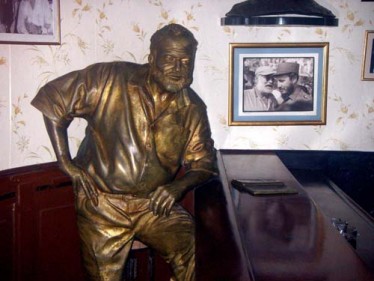
Life size statue of Ernie in the Floridita Bar in Old Havana.
Copyright 2011 Vic Socotra
www.vicsocotra.com
For Whom the Bell Tolls
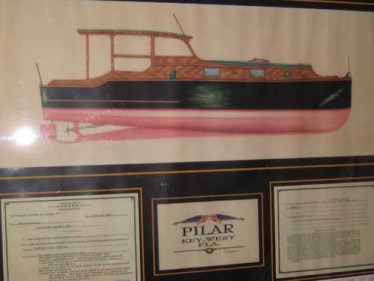
Fishing yacht Pilar, from a rendering at Ernie’s house in Key West. Photo Socotra
Eddie the Docent waved elegantly to the crowd of tourists, some covered in oil, who stood around the Hemingway dining table under the fine Venetian glass chandelier favored by Ernie’s second wife Pauline.
“He won the Pulitzer Prize for The Old Man and the Sea,” part of a somewhat disjointed narrative caused by the linear progression of the tour from the living room to the of the Hemingway residence in Key West through the hall, where a rendering of the fishing boat Pilar hung on the wall.
The jumble of Hemingway’s life made the short hand account of the detritus of a famous life confusing. Pictures of the four wives hung on the wall, along with Ernie, past and future, for ease of unscrambling things for the docents.
It did not help me. I looked over at my associate. “It was the fucking Nobel Prize, right?” and he nodded.
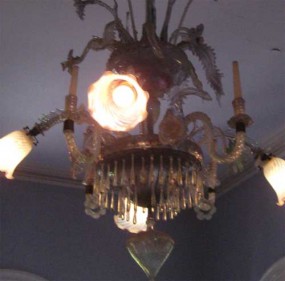
Pauline’s chandelier. Photo Socotra.
I had announced to the sleepy gatekeeper that I was arriving as a delegation from Walloon Lake, and Papa’s early incarnation in the great Northland, the time of his Nick Adam’s stories.
I presented my credentials to receive the military discount, while my associate presented his Florida Driver’s license with local address. “Local,” he announced. He was rightly proud that his status as such gained him free admittance to the home on The National Historic Register.
“Alien,” I said, thinking of the Conch Republic, but the gatekeeper was a local, too, and he just nodded and responded that they had a lot of them around town.
“I’m undocumented,” I said firmly, thinking that this would be a great place to park myself for a few months and change my status. A lot of places claim Ernie, including Uncle Fidel from his time in Cuba, but I have to think that he was actually the ultimate snow-bird, flitting away to some other continent or war when it got too hot and humid and sweat rolled down under the loose guayabera shirt.
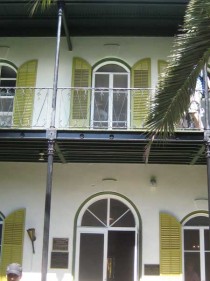
907 Whitehead St, Key West. Photo Socotra
The stately home up the brick walk with the wide verandas had been Ernie’s place, purchased by Pauline’s brother, from 1931 to 1939. That was after the split-up with Hadley, Pauline’s best pal, and the moving feast of the Paris years and I wondered how all that hung around the breakfast table.
Ernie heard of Key West from his pal and literary icon John Dos Passos. He and Pauline paid a visit on the way back from Paris, a roundabout stop, and they were enchanted. Ernie felt it suited him right down to the ground.
“It’s the best place I’ve ever been anytime, anywhere,” he declared. “Flowers, tamarind trees, guava trees, coconut palms…Got tight last night on absinthe and did knife tricks.”
We might have done some of that the night before, though some of the details were a little hazy. Ernie and Pauline rented on the island for a couple years and eventually bought this house at 907 Whitehead Street with a then-hefty loan of over twelve grand from Pauline’s rich Uncle Gus.
It was one of the biggest places in Key West, and famous long before Expat Ernie showed up. The original builder had actually put a cellar in the place, maybe one of the only ones in Monroe County, out of a sense of correctness brought from Up North.
It turned out the Eddie and I were both correct about the respective prizes, but an uneasy feeling crept over me after the perceived discontinuity and my associate and I wandered away from the group and walked out by the pool.

Ernie’s pool. Photo Socotra
The long placid aqua waters of the bathing facility had their own story, a rectangular fantasy in concrete that had to be carved out of the hard coral soil at vast expense, and prompted Ernie to place a penny in the concrete at the end of it, signifying that he was flat broke and his last coin was going into the pool.
“There used to be a walkway from the bedrooms upstairs over to the writer’s loft over the carriage house,” said my associate, shaking his head. “The quality of the docents has declined over the thirty years I have been coming to this place.”
We commiserated on the general decline of all things as we labored up the stairs to the office where Ernie worked, pecking out the stories of the ‘30s, wondering about how everyone we knew had gotten so old.
Gazelles and Antelope heads hung on the wall. I marveled at Ernie’s discipline. He insisted on working in the morning, even in the face of absinthe and knife tricks in the night.
Ernie really got around, despite his time in this lovely place, and he was getting me disoriented. If he was not here, at the original Sloppy Joe’s, he was trout fishing in Michigan, or conducting imaginary ASW patrols in his cruiser, or wandering below the snowy slopes of Kilimanjaro or summering in Cheyenne or contemplating the end of things at the wrong end of a shotgun near the new resort at Sun Valley.
Time being what they were when I was coming up, performance artist and disorganized author Hunter Thompson had been a role model, but I was increasingly realizing that he had lifted a large slice out of Ernie’s playbook, which was to roam the world looking for interesting places to drink. For Hunter, the business model was to operate under threat of bankruptcy, writing about it on deadline.
Ernie was much more methodical about his craft.
I am not going to throw any coconuts at anyone, each to their own, since those who live in glass houses ought not to parade around in the buff, so let’s just leave it at that.
Ernie had the guts to actually live with four women and love more, which is quite beyond me, but it had been a decent enough year in which I had stumbled over Ernie’s ghost more than once, at the Park Grill, and the old store in Horton’s Bay and now here in Key West.
In the depths of the winter in Michigan I stopped by the Park Grill in Petoskey where Ernie used to drink after he came home from the war, a decorated ambulance driver who was infatuated with one of the high school lovelies and used to wait, in uniform, for her to get out after the last bell.
The city fathers ripped down the old high school entrance where he waited, much to Mom’s dismay, since she had documented the rooming house where let a room, and struck up an acquaintance with the last living soul in town who knew Ernie in person.
She was a feisty old lady, who I heard one summer at one of Mom’s galas at the old train station where Ernie would debark on his jaunts up from Chicago. She was proud to say that she had not slept with him. “We just played tennis,” she was fond of saying.
She seemed to think that she had played Ernie better than some of the other
women in his life, and I am not sure she was wrong. No wonder he drank, and no wonder she outlived him by a half-century. She didn’t hear the same sort of bells that Ernie did.
“Writing, at its best, is a lonely life. Organizations for writers palliate the writer’s loneliness but I doubt if they improve his writing. He grows in public stature as he sheds his loneliness and often his work deteriorates. For he does his work alone and if he is a good enough writer he must face eternity, or the lack of it, each day.”
– (Banquet Speech for the 1952 Nobel Prize for Literature penned by Ernie. He may have suspected that the award was influenced by reports of his death by plane crash in Africa the previous summer.)
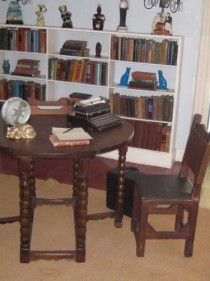
Ernie’s Chair. Photo Socotra.
Copyright 2011 Vic Socotra
www.vicsocotra.com
Freezing My Ass Off, Up North
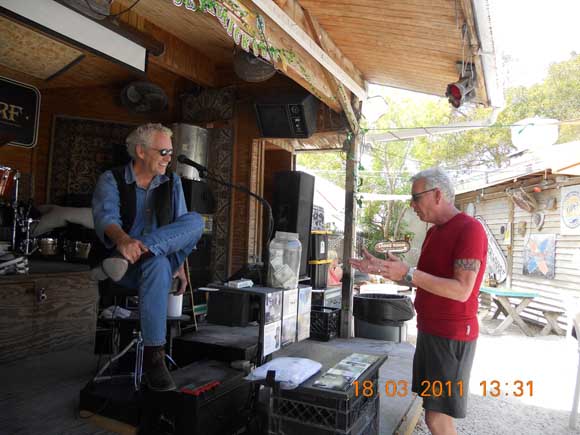
Noted artist Michael McCloud at the Schooner Wharf Bar talking to some idiot. Photo S&M Productions.
It was good to be back at Willow. Elisabeth-with-an-S was at her elegant and solicitous best; her movements graceful behind the bar as she topped off my first glass of happy Hour white. Old Jim was presiding at his accustomed spot at the corner of the L of the bar.
The Johns- the one with the Old Money-pedigree-and-an-H was in for the long haul, and Jon without was there, his bow-tie knotted with artistic imperfection.
Jon has taken a break from the Lovely Bea, the hot Hispanic lovely, for reasons best known to himself. It was good to catch up with the details of life in the hot-house city. Short-hair Mike anchored the end of the bar with his current flame, an attractive blonde with a placid peaceful visage that contrasts with Mike’s veiled menace.
Jon is a worthy inheritor of the mantle of George Hamilton, and all of us will have better tans and less seasonal affective disorder now that the solar disc is hanging longer in the sky.
Of course, that would mean actually being out in the sun, and not in the dim coolness of the Willow Bar. I will have to get on that presently, but perhaps not today.
It is going to take a few days to get over the trip, the first one in a while that did not have a snow-drift and dementia at the business end of it.
I am about done with winter, both as a concept and a state of being.
It would be presumptuous to pontificate about the Keys, but I will blather for a while anyway. I have no credentials for my opinions, but like North Korea, you have to go with the evidence of your senses.
I got a little drifty at the Willow bar, back up North, thinking about what it was like to round the bend at the Historic Seaport harbor walk, and hear the sounds of an ironic guitar.
My pals were dragging me to see a legend, the anti-Buffet singer Michael McCloud who did not get zapped with stardom, and is still playing in a tourist-town bar with a beer at his elbow and a cigarette tucked into the top fret of his acoustic axe.
An extremely drunk young woman in a tangerine cover-up darkened with the moisture of her still wet bikini was weaving her way to the cigar stand where an aging hippy sat puffing one of his creations.
The Schooner Wharf Bar is a bit of old Key West that adapted with the seasons. Once it was a place where the Navy sailors would get beat up by the locals, and where smuggling was as profitable as shrimping before the industry died.
My pal and his wife are locals, now, and proud of it. They have owned a place there for nearly a dozen years, and I was pleased to be taken in tow to get a sense of the place. Schooner Warf was as good a place as any to start, though it did occur to me that things had started the night before and featured people with green hair and significant attitudes.
Michael McCloud is the stage name of Michael Snyder, and he is exactly where he wants to be. He got my attention through Jake, who has been playing one of his albums for the last fie or six seasons of Terrapin football, lending a certain raffish island charm to the very professional tailgating before the games at College Park.
I mentioned that to Mr. Snyder at the first break, when the fish tacos had been ordered and I surrendered to the imperative to purchase a memory or two of the island. He seemed remarkably unimpressed, or at least indifferent to my story, though either I, or the Captain Morgan and Diet Coke were fairly articulate.

I bought the t-shirt and a different CD to give to Jake for the variety, and sat down again, having achieved the check-in-the-block for meeting living legends.
McCloud is a raffish man, and a bit of a schemer. In 2006, he launched a suit against country singer Tobey Keith, claiming that his 2003 number one hit ‘I Love This Bar” was a lift from his own signature song “’Tourist Town Bar’.”
Keith accused McCloud of being a low-life, a contention which I doubt bothered him very much, since his gig is a steady one, noon to five, daily, and Keith has a heavy touring regimen that does not fit the laid-back island life-style.
After the case was dismissed, Keith vented at the McCloud’s legal raid. He called him “a greedy lowlife opportunist who just wants to get rich.”
“In fact,” the injured artist sputtered, “McCloud publicly bragged this lawsuit would make him a rich man, that I would buy him a comfortable life, retirement, house, car, big boat, and Harvard educations for his children.”
I don’t know about that, but I do know that a founding citizen of the Conch Republic would not let the prospect of easy street go by without a least a lazy grab at it.
After all, this is the land of treasure salver Mel Fischer and other graspers for the moon.
Mel and Captain Tony were not going to be available for consultation. Mel passed in 1998 in Key West, and his company is still fighting a couple nation states over the latest treasure find, the enigmatically-named wreck of the “Black Swan.” They may win, you never can tell.
Captain Tony was not going to be on the menu, either. He has gone on to the next world, though my pals had met him dozens of times. Tony owned the original Sloppy Joe’s, a landmark were Ernie Hemingway used to prop up the bar, and which was on the detailed agenda for later in the day, assuming I was still in condition to walk.
We tested that proposition after a couple sets and several more Captain Morgans. Looking over the rail of the dock, I saw gigantic pet tarpon swirled in the depths off the dock, appearing out of the shimmering green gloom looking for treats.
“Seasonal living is the key,” I said, not meaning the pun. “Imagine showing up sometime after labor day and departing right after Memorial Day to go back up north.”
My pal grimaced. “It is a little muggy, but the best part of the summers is that we have the town to ourselves. “No lines for the best restaurants, seats in the bar, and no obnoxious traffic. It pays to be a local.”
Behind us came the strains of McCloud’s signature tune drifting over the umbrellas and lattice walls of the tourist town bar. “I’d rather be here, just drinking a beer, than freezing my ass in the North.”
“The man has a point,” I said.
“You better believe it,” said my pal with an island smile. “Now, let me show you where the ghosts of Mel, and Captain Tony and that rascal Hemingway hang out.”
“Cool,” I said. “And I am about done with this freezing thing.”
Copyright 2011 Vic Socotra
www.vicsocotra.com
Shell Stations Near MIA

I could not have done it by myself. I have to thank S&M and key family members and business associates for their help.
All of them are about the best that there is, in terms of pals, and I would have to thank the Government for getting me to the pastel palace of south Florida to begin with, and my lovely cousin on the way out of the chaos that is the capital of Latin America at Miami International Airport.
In fact, let me just say it up front: I fucked it up. I had to find a gas station, and it was really dark on the divide of Sunday morning.
The whole thing was messed up. When I was finally sitting on my cousin’s patio- an extraordinary home with soaring ceilings three stories up and alligators in the pond in back- I realized I was not scheduled to be going to my home for another week. The reservation in the system was either for that morning, when I was at the Truman vacation White House at the old sub base in Key West, or next week or something.
There was so much that happened after the conference in Miami, not to mention all the crap that went down at the meeting itself.
Thinking back, to the extent that I can, it is remarkable. South Beach. The Hilton Pool. OMG. My back is still itching from the shedding skin of the first decent burn of the season.
Alas, I still have not figured that out and I was wearing the prescription sunglasses which made it difficult to see the computer screen I realized I may never get to the bottom of the trip, or how it worked how it did.
It is that way sometimes, and the road has its own imperative. And this was a great road, stretching as it did from the Hilton downtown to the very southernmost point of the United States of America, down US 1 to Mile Marker Zero of fame and infamy.
Which of course is bullshit, completely in keeping with Key West. The marker is a few feet adjacent to the fence to the Navy Reservation, which clearly has some satellite dishes a quarter of a mile to the south, and there are further little patches of sand that periodically expose themselves to be legitimate claims to the Southernmost patch of America proper, but never mind.
Maybe my biggest question in all of this is about the Shell Station near MIA, the one this morning in Hialeah Gardens that featured the lovely blonde Latina at the counter behind the open exterior window and the muscular cop who had emerged from his cruiser and was pretty much a dead ringer for Eric Estrada in his better days. Of course, looking at the pictures of the last week, that is true for all of us.
I asked for coffee from the Latina, pour favor, who was flirting hard with Eric, as two or three burly guys sat in the interior of the mini-mart looking on. The convenience store is the actual money-maker for the Shell franchise people, or at least the ones who are awake in the daytime.
There was no coffee, and it was fucking five something in the morning, and I had to recalibrate myself. I asked for coffee in Japanese, I think, searching for the right language. I made a note to buy the Rosetta Stone Spanish curriculum, and sighed. The people here were all on the back end of their day as I was starting a new one, and it was A-OK.
They did not need coffee even if I did, and that is just the way it was in the darkness of a Miami Sunday.
I got back in the car after putting $44 worth of regular in the piece of crap rental Camry and decided to just give the car back and go home.
What a week. My God, what a week.
St. Paddy, Hemingway, Truman and family secrets all wrapped up in it. Better said, here are the individual adventures:
Driving US 1 south from the mainland to the Keys and back. Flagler’s railroad, and the original amazing bridges south. Key Largo and Marathon and the rest, the little isles dividing the Gulf from the mighty Atlantic.
Seeing what it is like to see a four-ship of Navy jets launching for OpArea W-78, the Sound of Freedom roaring toward a little good-hearted Air Combat Maneuvering (ACM). Did I mention that there is clear air-mass there 330 days a year?
People in Green Hair. OMG.
Duval Street. OMG.
The House Tour of Key West, five dynamite venues that show you how you could live, if you were clever and rich.
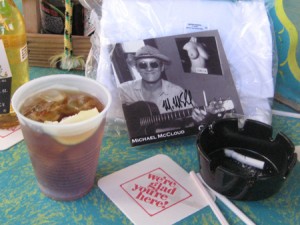
CAPT Morgan, CD and T-shirt hanging with The Big Dogs. Photo Socotra.
Drinking without shame in the afternoon with Michael McCloud, the anti-Jimmy Buffet singer where once the shrimpers would kick your ass and the pet tarpons swim below the dock in immense grace.
Continuing to drink without shame on Duval Street to Papa Hemmingway’s house, where his typewriter sits today where he worked.
The bar, now incongruously surrounded by a Hyatt Resort, and the table where Mel Fisher schemed to salvage the millions of the sunken Spanish galleon Ochoa.
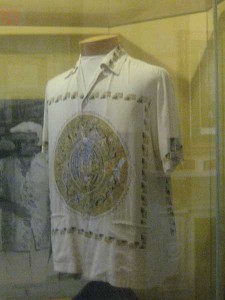
Harrys oddly Aztec shirt, photo Socotra.
Harry Truman’s aloha shirt, and the house that defined his poker-playing Presidency, and the desk where he signed the National Security Act of 1947, which, as amended, has defined my life.
I suppose we are going to have to triage this story somehow, against the backdrop of yet another war to be imposed on some imagined Strong Man- I was surprised to hear it, coming north through the Keys and listening to radio US1 in the rental, and even more surprised to hear it was the Frogs that made the first strike at the Libyans.
Interesting. But enough for now.
Manana we can do the astonishing things that happened in the Keys, one by one, and then walk the cat backward through the gated community in Coral Springs and eventually on through the shower at 0430, and then the electric chaos of MIA and back to Washington.
I gotta tell you right now, though, it is really cool to have pals in nice places.
And God Bless Harry Truman.
Copyright 2011 Vic Socotra
www.vicsocotra.com
